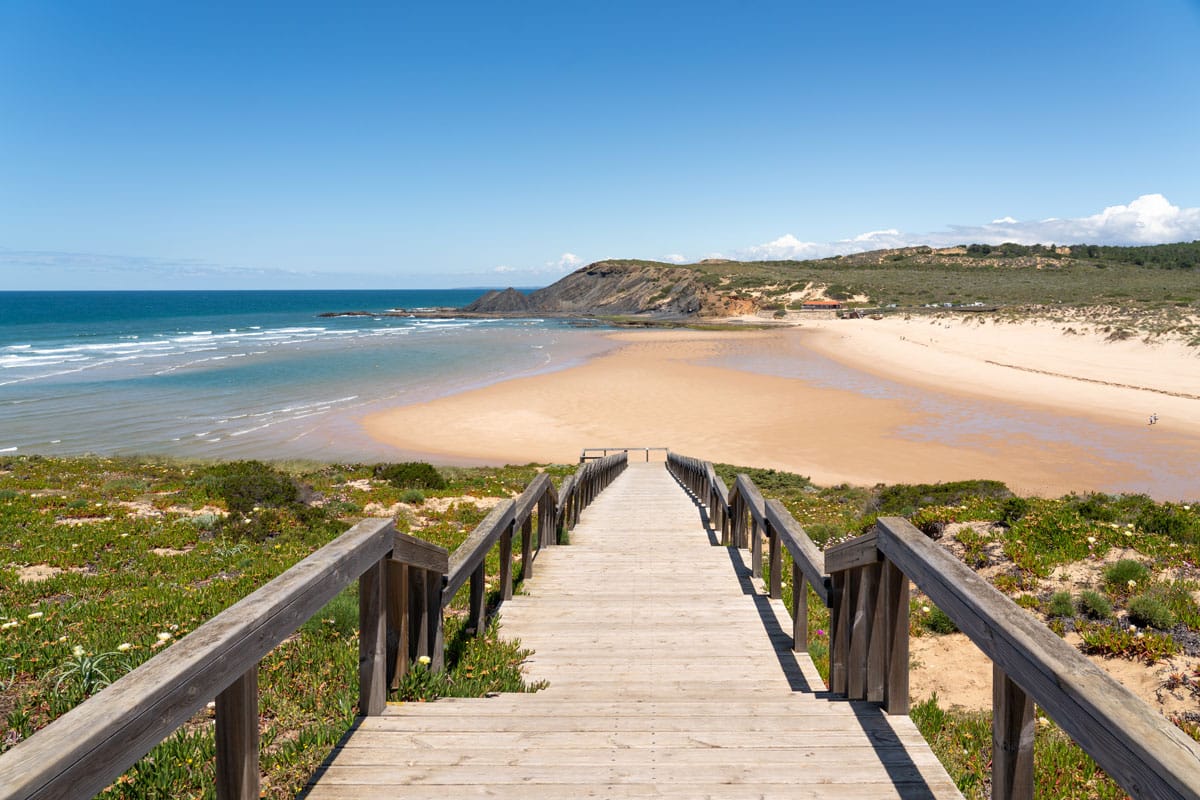9Views 0Comments

How to Save Money on Travel in 2026: Flights, Hotels & More
I’ve been lucky enough to travel the world nearly full-time for 10 years. Since giving up my job as a Restaurant Manager a decade ago and, by some miracle, becoming a guidebook and travel writer, I’ve visited close to 70 countries by train, ferry, bus, boat, or plane and picked up plenty of lessons on how to save money on travel along the way. I always want to stretch my budget as far as possible without sacrificing on comfort, value or sometimes luxury (travel writing is not a particularly well-paying job), and I’ve mastered the art of getting more for spending less.
When I first launched this website, the theme was two-day getaways to some of Europe’s hidden gems for under £100 all-in, to make the most of the days off between long restaurant shifts. It’s fair to say a lot has changed in the world of travel in recent years. Those days of incredible bargains are much harder, though not impossible, to find. This also means much online advice about both destinations and enjoying luxury travel for less is outdated. Saving money on travel, therefore, sometimes means thinking outside of the box.
From finding the best flights (without fines for ditching one leg) and promotions at luxury hotels to saving money on e-sims, considering alternative destinations, and reconsidering what the “off-season” actually means, these are the tried and tested tips I still use today to allow myself to enjoy multiple trips throughout the year on a relatively modest travel budget.

Look for hotel deals outside of OTAs
One of the biggest expenses of any trip is accommodation. Sure, camping and hostels are obvious budget travel tips, but saving money on travel shouldn’t have to mean sacrificing comfort and cute stays.
One of the easiest ways to save money on travel is to circumnavigate the OTAs, or Online Travel Agencies. These include all the major online hotel booking websites, which charge fees and percentages on top of the accommodation costs, squeezing profit out of the owners and often promising the lowest prices online. In fact, some of these operators prohibit hotels from listing a lower price publicly anywhere else as part of their contract agreement, ensuring their best price guarantees.
This doesn’t necessarily mean the price on the OTA is the best value price available; it just means it’s the best value price available publicly. To circumvent this, you can email hotels to ask if they can match or beat the rate if you book directly, but it can be quite a time-consuming task. Another option is to register for websites that offer members discounts. As these prices aren’t public, but for members only, they can offer deals such as free nights, discounts, lower room rates or upgrades, which aren’t allowed to be published publicly.
One of the best sites to find luxury hotel promotions is Private Upgrades because its membership is free, so you don’t have to spend extra to save money on travel accommodation in the first place. Simply by being behind the registration wall, they can ensure the hotels can provide deals without breaching any OTA arrangements.

Reconsider when the shoulder and off-seasons are, and check local statistics for forward planning
I’ve been an avid offseason traveller (and champion) for over a decade, planning nearly all my trips to avoid the peak months, regardless of whether local closures or the weather make it inadvisable. Yes, it saves a lot of money, but it also affords a much more local and uncrowded experience.
Some of my favourite recent offseason trips have included an unplanned February road trip around Andalucia, booking bargain palatial-stays on the day; a delightfully quiet, if slightly clouded, April jaunt around the Dolomites; taking the ferry to the Faroe Islands at the end of not-recommended autumn, and making the most of Bali’s rainy season. I also live in one of Europe’s most seasonal destinations (the Algarve), so I have year-round, local insights into why the offseason can be the best season.
However, the most significant local insight I can offer is this: the shoulder and offseasons are changing. Advice on how to save money on travel in the most popular cities may now be ineffective, as they are simply too heavily trafficked year-round. Some Island and beach escapes that once emptied in September now might have decent occupancy rates until November. And with climate change making some Mediterranean destinations, for example, more appealing in winter than in their typical summer, rates and costs are in disarray.
Yes, the headlines should be about skipping Venice on this day or that to save a fiver, or going in this month to save a euro or two a night on tourist tax, but that barely adds up if new flight routes, or new seasonality, are pushing up all the base prices. The best way to plan a truly “lower season” trip with lower prices is to use some data and do your own quick research. Nearly all countries collate and publicly publish tourist statistics, which can help you know in reality how many people are actually visiting a destination at a particular time of year, with more up-to-date data. This provides more accurate insight than a pre-COVID website article.
For example, I’ve been planning an upcoming trip to Iceland on a budget. In that article, I shared examples of how I generated a quick data report from the Icelandic government to determine which months had the lowest number of overnight visitors in 2024 and 2025. I found that not only did it not precisely align with much of the online advice, but once I started searching in those specific time periods, I really was making considerable savings.

Check if there are local rail passes before committing to Interrail or Eurail
Train travel in Europe is having a renaissance, and as an avid slow traveller, I rejoice in it. A couple of years ago, I did an epic train trip across the whole of Europe(with some buses and ferries where needed) from Faro in Portugal to the Faroe Islands via the Baltic States, and then returned after chasing the northern lights in the Lofoten Islands from the Arctic Circle down to Africa, ending in the Sahara. It was incredible, spanning some 20 countries, and I learnt plenty about how to save money on overland travel along the way.
But what I didn’t do was buy an Interrail or Eurail pass. Sure, in certain situations, these can save you money, but the most valuable asset of these passes is the flexibility they offer, especially in the high season. I’ve used it before and made substantial savings. But there are other ways to save money on rail travel these days.
New budget operators, such as Italo in Italy and Iryo in Spain, are making high-speed rail travel more affordable, and many of these services are omitted from rail passes – although Iryo was added to the network in October 2025. Some countries in southern Europe always require a reservation fee to be paid. And if your itinerary is set in stone, and you know you must take certain trains on specific dates, it can be cheaper overall to book a standard ticket. There are also lots of new rail passes available directly from national operators now. I used the likes of the Deutschland-Ticket (one month travel on regional trains for under €70), the liO TER ticket in parts of southern France for €10 a day, and the Einfach-Raus-Ticket in Austria.
Sign up for all and every kind of alert, especially for flights
Airfare, especially if you’re travelling intercontinental, can be one of the most significant expenses of a trip. There are plenty of ways to save money on travelling to your destinations, especially if you’re able to Travel Hack or rack up points via Credit Cards. However, these options are usually far more valuable to USA citizens than those elsewhere.

To help find the best flight deals, sign up for flight discount alerts and emails. Some airlines, such as Jetstar Australia’s “Friday Fare Frenzy”, have some great, timely deals released once a week, while signing up for flight clubs that alert you to heavily discounted or error fares can help with more general destination deal inspiration.
Another tip when searching for flights is to switch your “country of booking”, as some agents and airlines are restricted geographically on where they can sell tickets. For example, using Skyscanner, I just made a quick search on a flight from London to Bali. After switching my country from the UK to Indonesia in the top right-hand corner, the price changed by £37. A smallish discount for sure, but I’ve found the best ways to save money for travel are often to count up all these little cost cuts, and it soon adds up.
Stopover, or switch out your destination for somewhere similar
If you’re simply looking for a summer fun holiday, aren’t too fussy about where you go, or are keen to travel to a destination with fewer crowds, such as these fab underrated European cities, you can soon make some substantial savings. These reduced costs can begin even before setting foot in the destination. Skyscanner’s “Explore Everywhere” feature remains one of the best tools for this, as it will show you every flight option currently available in price order after entering your dates and home airport. Hadn’t considered Lublin in Poland or Plovdiv in Sofia? Well, now you might be. And those destinations can be far more affordable on the ground than Krakow or Paris.
Stopover programmes, now offered in numerous destinations from Iceland to China and the Middle East – essentially giving you two destinations for the price of one – are also great deals and often won’t be found if using a search engine. So it’s worth checking out the website of the national airline of the country you ultimately want to end up in.

Use e-SIMs when there are savings, or local SIMs when there are not
Long gone are the days of needing to buy a SIM card on arrival or be stung by high roaming fees. Digital e-SIMs are a blessing, notably in terms of reducing hassle, cost, and plastic pollution. Whether you need an e-SIM for Europe, the USA, or pretty much any country in the world, it’s as straightforward as ordering it online before your trip starts and a few taps on your phone to set it up.
Still, if you plan to use a lot of data while travelling, such as if you’re a remote worker or have other heavy usage requiring calls, an e-SIM may not always save you money. Sometimes, buying a prepaid, one-month unlimited data SIM on arrival can be cheaper, so it’s worth searching online for local operators’ prices and checking if they have an airport outlet before purchasing your e-SIM.
Avoid Whitelabel ATMS like the plague and consider an online bank card
I’m certainly not qualified to give anyone financial advice, so I won’t. However, I would like to share some personal advice: avoid Whitelabel ATMs as much as possible. These ATMs, managed by private companies rather than banks, are cropping up all over, especially in popular European destinations where cash remains a common form of payment. The withdrawal and exchange fees are usually higher than those at a bank, so it’s always best to withdraw cash from a proper outlet when you can to avoid getting caught out.
In some countries, such as Austria, where cash is often required for payments, even the bank’s ATM fees can be eye-watering. Still, many international banks have at least one free or discounted arrangement with one local operator, so always check who that is to know which ATMs to seek out.
It’s also worth reviewing how much your main bank card costs you for foreign transactions, especially in this day and age, where we’re often tapping on and off public transport, and these small transaction fees can soon add up. I personally use Wise (formerly Transferwise) when travelling to make payments and withdrawals, with both a physical card and a digital one on my phone, as you can have multiple currencies in your “digital wallet” at any time.

Don’t give up on group tours
If you’re travelling over a major event or holiday, last-minute, or to a country where costs are already pretty lofty, a group tour can sometimes save you money. I love travelling solo and the freedom it affords, so I rarely consider group trips, but there are instances where it just makes sense.
Most tour operators contract their hotels, trip dates, and other arrangements months, and often years, in advance, meaning that even if hotel rates are skyrocketing somewhere for whatever reason, their tour package prices will remain constant. If you’re set on visiting somewhere at a specific time, do have a look at what’s on offer. I did this last Christmas with Intrepid Travel when I went to Morocco, and in the end, even with a single supplement, it worked out cheaper than my original solo travel plans.
Last-minute, unplanned, off-season trips can still be an excellent value option
While it seems like booking everything in advance is the best way to save money these days, that’s certainly not always the case. Especially if you’re travelling in the off-season and there’s no chance of hotels reaching capacity.
This February, I put that mindset to the test on a road trip across Spain’s Andalucia region. With no plans beyond the car rental and first night’s hotel, I spent a week detouring to towns on the recommendations of servers and tourist offices, booking nearby hotels last-minute and often snagging unique, palatial-style stays for around €50. It was one of my favourite trips I’ve ever taken and felt like “proper travel” if you will, thanks to the spontaneity. Saving money on travel doesn’t have to be all serious spreadsheets; there are plenty of fun ways to make your money work harder on the road.



